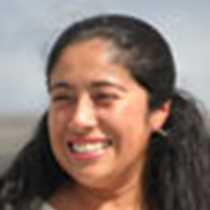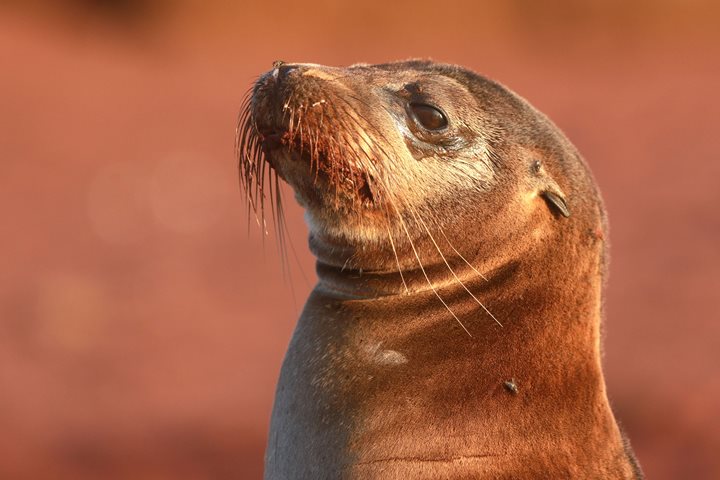This was our final day in the western part of the archipelago, and we spent it well, dedicating our entire day at Isabela Island. In the morning we visited Urbina Bay, where we managed to spot more than 30 Alcedo giant tortoises! It was unbelievable. Several colorful Galapagos land iguanas were seen too. In the afternoon National Geographic Islander redirected to Tagus Cove, a historical site, where our guests spent the day snorkeling beside sea turtles and penguins and riding Zodiacs and paddleboards along the coast. What remarkable fortune it has been to experience the Galapagos this way.
- Daily Expedition Reports
- 06 Feb 2019
Isabela Island, 2/6/2019, National Geographic Islander
- Aboard the National Geographic Islander
- Galápagos
Vanessa Gallo, Naturalist
Vanessa Gallo’s grandparents arrived in the Galápagos Islands in 1936, making her the third generation of her family to live and work in this magical archipelago. She left the islands for the capital city of Quito for high school, where she discovere...
Read MoreTaylor Butz, Expedition Leader
Born and raised on Vashon Island in Washington State, Taylor grew up exploring the forests behind his house and attending the island’s Pirate Camp during the summers. He considers himself lucky to have grown up in a place that allowed him to experien...
Read MoreShare Report
Related Reports
11/23/2022
Read
National Geographic Islander II
Isabela and Fernandina
Our day began with the chance to point out a lot of interesting geological features as we enjoyed Zodiac tours along a massive flank of Ecuador Volcano on Punta Vicente Roca. In the afternoon, we took a sunny walk on Punta Espinoza on Fernandina Island. We spotted many iguanas, and a bunch of sea lions hanging around, too.
11/22/2022
Read
National Geographic Islander II
North Seymour & Rabida Islands
Relatively small and low compared to neighboring Santa Cruz, North Seymour is located to the north of Baltra. The island is dry with predominantly low shrubs, like prickly pear cacti. The incense trees are bare during the dry season. Seabirds like frigatebirds and blue-footed boobies nest on the island, and sea lions rest on the sand when they are not fishing. Land and marine iguanas also live here. Rabida is in the middle of the archipelago and has a striking red sand beach. We observed a small colony of sea lions of all ages resting or nursing. Behind the beach, American flamingos nest in a brackish lagoon. This island is full of contrasts and wildlife that we enjoyed observing during this day of expedition.









